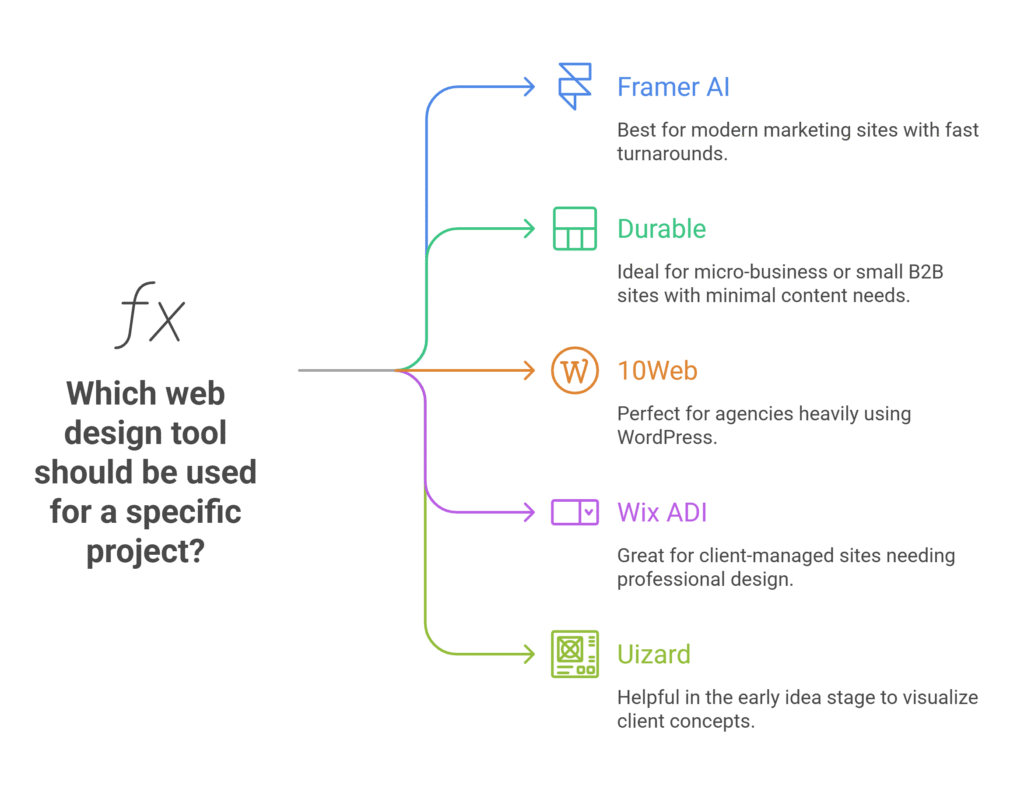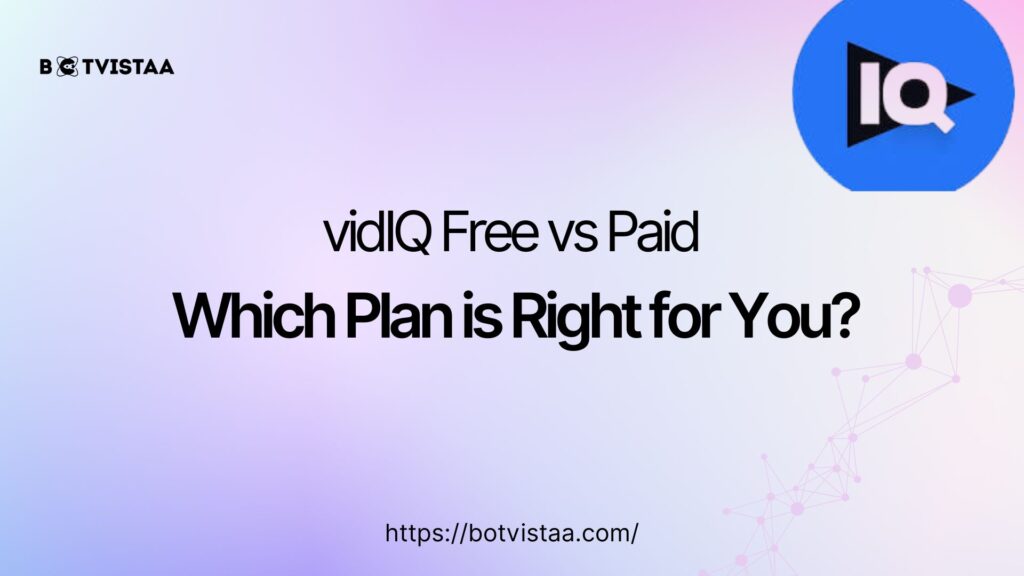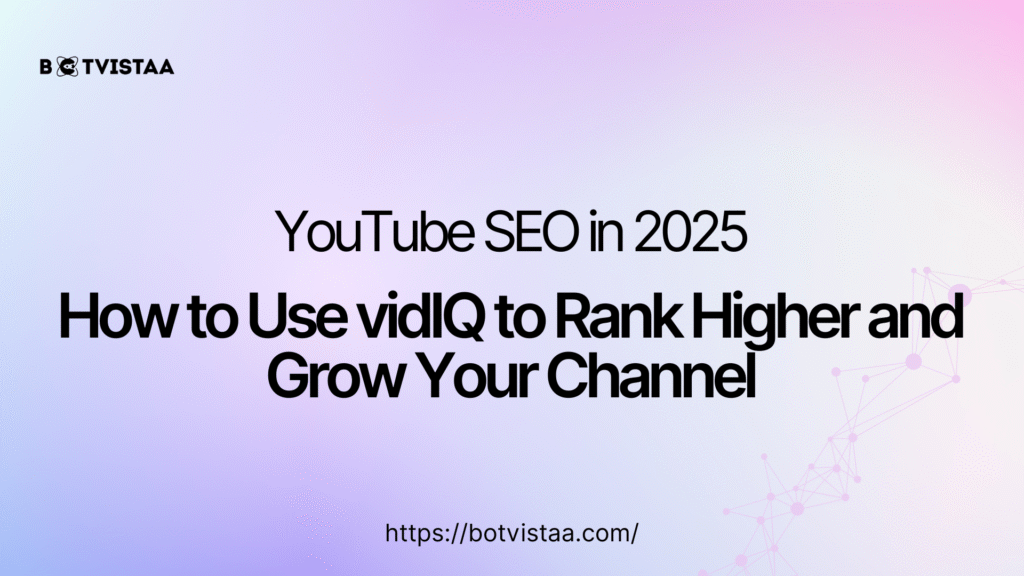Lorem ipsum dolor sit amet, consectetur adipiscing elit. Ut elit tellus, luctus nec ullamcorper mattis, pulvinar dapibus leo.
- Best AI Tools For Automation
How AI Is Changing Web Design: Trends, Tools, and the Future of Creativity
Jump To
When you purchase through links on our site, we may earn an affiliate commission. Here’s how it works.
Clients want visually stunning, high-performing websites. They want them fast. They want them to be affordable. And they want them tailored to their brand.
The problem:
Traditional web design workflows are slow, labor-heavy, and often require juggling multiple tools and teams — costing you both time and margin.
The solution:
AI streamlines the process from concept to launch, helping agencies deliver faster without sacrificing quality or creativity.
The Bottleneck of Traditional Web Design Workflows
- Time drain – Research, wireframing, copywriting, and revisions stretch project timelines.
- Resource strain – Skilled designers and developers are expensive and in short supply.
- Fragmented tools – Jumping between platforms for design, content, and analytics slows progress.
- Client churn risk – Long turnaround times push impatient clients to competitors.
How AI Addresses Speed, Cost, and Customization
- Faster delivery – AI tools can create layouts, write copy, and generate images in minutes instead of days.
- Lower costs – Automating repetitive tasks reduces billable hours without cutting value.
- Consistent quality – AI ensures brand guidelines and accessibility standards are met every time.
- Scalable personalization – AI analyzes user data to tailor designs for specific audiences.
Pro Tip for Agencies:
Use AI not as a replacement for your creative team, but as a force multiplier. Let it handle the grunt work so your designers focus on high-impact creative decisions.
How Is AI Changing the Web Design Process from Start to Launch?
Your challenge:
Even with a talented team, web projects can stall in planning, design, or development. Every delay costs billable hours and risks client frustration.
The solution:
AI streamlines every stage — from research to deployment — so you can deliver projects faster, more accurately, and at scale.
1. Research & Strategy Automation
Traditionally, audience research, competitor analysis, and SEO planning can take days.
With AI:
- Market insights in minutes – AI tools scan competitors, industry trends, and search data instantly.
- Automated content briefs – Outline keyword strategies, target personas, and content structure without manual digging.
- Data-driven design decisions – Use AI analytics to inform layouts, CTAs, and navigation flow.
2. AI-Powered Wireframing & Prototyping
Creating initial designs is time-consuming and iterative.
With AI:
- Generate multiple layout options in seconds.
- Use drag-and-drop AI design assistants to adjust typography, spacing, and color palettes automatically.
- Produce clickable prototypes for client feedback without heavy coding.
3. Automated Coding & Responsive Design
Turning a design into a working site can eat up weeks.
With AI:
- Convert wireframes into HTML/CSS/JavaScript instantly.
- Auto-optimize for all screen sizes.
- Speed up QA testing with AI-driven bug detection and layout validation.
4. AI-Driven SEO Optimization Before Launch
Too many agencies leave SEO fixes for later — costing visibility.
With AI:
- Identify missing meta tags, headings, and alt attributes.
- Suggest keyword-rich copy adjustments.
- Check site speed, mobile performance, and accessibility compliance pre-launch.
Pro Tip for Agencies: Build AI into each step of your workflow — not just the design phase. This ensures every project is faster, leaner, and client-ready from day one.
What Are the Emerging AI Trends in Web Design for 2025 and Beyond?
Your challenge:
Web design is evolving faster than client expectations. If your agency can’t keep up with new capabilities, you risk falling behind competitors who can.
The solution:
Stay ahead by understanding the AI trends shaping the next wave of web experiences — and be ready to offer them before clients ask.
1. Data-Driven Personalization at Scale
- AI analyzes user behavior in real time.
- Content, designs, and offers adjust instantly to each visitor..
- Example: A B2B SaaS site showing different case studies depending on the visitor’s industry.
2. Voice & Conversational UI Design
- With the rise of voice search and chatbots, AI enables natural language interfaces.
- Sites become more accessible and interactive.
- Example: AI-powered chat that guides prospects through a pricing configurator.
AI-Assisted A/B Testing for UX Improvements
- No more waiting weeks for test results.
- AI quickly identifies the best-performing variations by analyzing patterns early.
- Ideal for optimizing headlines, CTAs, and landing page layouts.
4. Accessibility Compliance Through AI Scanning
- AI checks for WCAG compliance during design.
- Automatically fixes color contrast, alt text, and keyboard navigation issues.
- Reduces legal risk and improves user experience for all.
5. Low-Code & No-Code Platforms With AI Integration
- Tools like Framer AI and Wix ADI lower technical barriers.
- Agencies can prototype and ship projects faster without sacrificing polish.
- Allows teams to focus on creative strategy instead of coding bottlenecks.
Pro Tip for Agencies: Use these trends in your sales pitches. Showing clients you’re already implementing next-gen solutions positions you as an innovator, not a follower.
Which AI Tools Are Leading the Web Design Revolution?
Your challenge:
The AI tool market is exploding. Choosing the wrong platform wastes time, money, and client trust.
The solution:
Focus on proven AI-driven tools that match your agency’s workflow, project scale, and budget — then integrate them strategically.
Top AI Web Design Tools for B2B Agencies
When to Use Which Tool

- Framer AI → Best for modern marketing sites with fast turnarounds.
- Durable → Ideal for micro-business or small B2B sites with minimal content needs.
- 10Web → Perfect for agencies already working heavily in WordPress.
- Wix ADI → Great for client-managed sites that still need professional design.
- Uizard → Helpful in the early idea stage to quickly turn client concepts into visuals.
Pro Tip: Don’t commit to a single AI tool. Create a tiered AI toolkit so you can choose the right platform per project scope and client budget.
How Can Agencies Maintain Creative Control While Using AI?
Your challenge:
AI can speed up design, but it also risks producing generic, “template-like” websites that feel the same as everyone else’s.
The solution:
Use AI as a creative assistant, not a replacement — guiding it with your agency’s brand expertise, client insights, and human touch.
Avoid Cookie-Cutter Designs
- Customize templates – Never use AI outputs “as is.” Tweak layouts, colors, and typography to match the brand.
- Blend multiple AI tools – Use one for design, another for copy, and a third for imagery to create unique results.
- Inject brand tone early – Feed AI with the client’s brand voice, messaging pillars, and style guidelines from the start.
Use AI for Ideation, Not Final Execution
- Treat AI drafts like mood boards or wireframes.
- Use them to test concepts and accelerate brainstorming sessions.
- Let your design team refine the final deliverables.
3. Keep Brand Personality Front and Center
- Incorporate custom photography, illustrations, and animations.
- Add micro-interactions that reflect brand values.
- Use storytelling techniques AI can’t replicate — like real client case studies and testimonials.
How Should You Prepare Your Agency for the AI-Driven Future of Web Design?
Your challenge:
AI adoption isn’t optional anymore. Agencies that wait risk losing projects to faster, AI-enabled competitors.
The solution:
Proactively build AI skills, redesign workflows, and position AI as a premium value-add for clients — not a discount shortcut.
Develop High-Value AI Skills Internally
- AI prompt writing – Learn how to give precise instructions to generate better designs, copy, and code.
- UX strategy with AI insights – Use AI analytics to shape user flows and conversion paths.
- AI-assisted SEO – Incorporate optimization directly into design stages.
Build Hybrid Workflows
- Combine AI for speed (research, wireframing, basic coding) with human expertise for creativity and polish.
- Standardize repeatable tasks so junior team members can run them through AI tools.
- Document AI usage policies for consistency across projects.
Position AI as a Value-Add in Client Pitches
- Show clients faster timelines and enhanced personalization.
- Include AI-driven features — like real-time personalization or AI-powered chat — as premium upsells.
- Use before-and-after examples to demonstrate AI’s measurable ROI.
Test & Integrate Continuously
- Pilot new AI tools on internal projects before using them with clients.
- Evaluate output quality, integration ease, and time saved.
- Keep a rotating shortlist of top-performing tools.
Make AI part of your brand identity — “We combine human creativity with AI precision” — so clients see it as part of your expertise, not a gimmick.
Final Words
AI is no longer a “nice-to-have” in web design — it’s the new baseline. For B2B agencies, marketers, and freelancers, the real opportunity lies in using AI not just to speed up delivery but to scale personalization, improve user experience, and free your creative team to do what humans do best: strategy, storytelling, and innovation.
If you adopt AI thoughtfully, you’ll deliver better results in less time, stay ahead of competitors, and position your agency as a forward-thinking partner your clients can rely on.
FAQs About AI in Web Design
1. Will AI replace web designers?
No. AI speeds up repetitive tasks but can’t replace human creativity, brand strategy, or complex UX decisions. The best results come from AI + human collaboration.
2. Are AI website builders good for complex projects?
They work best for small-to-medium projects or quick MVPs. For large, custom builds, AI can accelerate parts of the workflow but still requires developer input.
3. Is AI-generated web design SEO-friendly?
Yes, many AI tools include built-in SEO features like optimized meta tags and responsive layouts. However, manual SEO strategy is still essential for long-term results.
4. How do I avoid generic, cookie-cutter AI designs?
Feed AI tools with your client’s brand guidelines, tone of voice, and design preferences. Always refine outputs with human creativity.
5. What’s the biggest risk of using AI in web design?
Over-reliance. If you publish AI output without review, you risk generic branding, compliance issues, or poor accessibility. Always apply human oversight.
6. How should agencies introduce AI to clients?
Frame AI as a value-add — faster delivery, better personalization, and more flexibility. Emphasize that your team still provides the strategy and creativity behind the tools.
Subscribe To Our Newsletter
Aqsa Tehreem
- Best AI Tools For Automation
Our Recent
Blogs


Canva vs Lumen5: Which Video Maker Is Better for B2B Agencies?

YouTube SEO in 2025: How to Use vidIQ to Rank Higher and Grow Your Channel

GoHighLevel Funnel Automation for Client Retention: Post-Onboarding Guide


